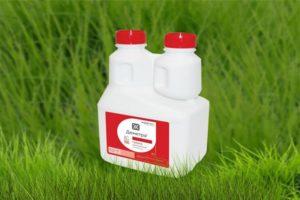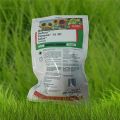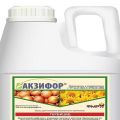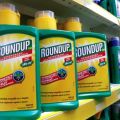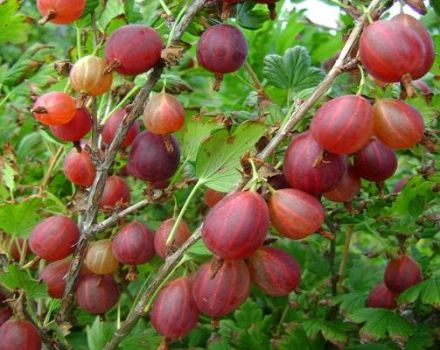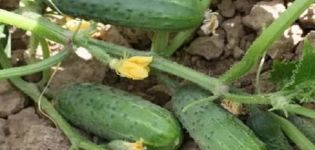Instructions for use and mechanism of action of the herbicide Forward
For the growth and development of crops, they need freedom from weeds, which can be destroyed with the help of chemicals. One of them is the herbicide Forward, which has a selective effect. It is successfully used in fields with sunflowers, peas, rapeseed, flax, sugar beets, chickpeas, soybeans, freeing them from cereal weeds.
Content
- 1 General characteristics of the drug "Forward"
- 2 How does weed control work?
- 3 Advantages and Disadvantages of Using Herbicide
- 4 Consumption rate of funds
- 5 Preparation and use of working solution
- 6 Safety when working with the tool
- 7 Drug toxicity
- 8 Compatibility with other substances
- 9 How and how much can you store
- 10 Are there any analogues?
Before using the Forward herbicide, you should study the instructions for use of the drug, strictly observe the dosage and procedure.
General characteristics of the drug "Forward"
“Forward” refers to a selective herbicide applied after emergence of crops. It is based on quizalofop-P-ethyl. Its content in 1 liter of the drug is 60 grams. The active ingredient is dissolved in organic solvents before packing. It is odorless and does not react to direct sunlight.
The Forward herbicide is produced in the form of an oil emulsion, packaged in plastic cans of 5 and 10 liters.
How does weed control work?
Thanks to the oil-based herbicide, the absorption of the substance by the weeds is faster. Penetration into the plant is carried out through the leaf mass. Small drops of the sprayed preparation form a film on the surface of the plant and do not allow the active substance to evaporate. The oil emulsion is resistant to precipitation and changes in weather conditions. Quizalofop-P-ethyl quickly reaches the root system and growth points of weeds, stops their development and leads to complete death. The first signs of effectiveness are observed within a week after spraying, after 15-20 days, harmful plants dry up.
Advantages and Disadvantages of Using Herbicide
The positive properties of the Forward herbicide include:
- no need to carry out more than one treatment;
- long duration of drug action (up to 70 days);
- fast assimilation by the plant (within an hour);
- pesticide resistance to precipitation;
- dried plants do not need to be removed, they themselves turn into organic fertilizer;
- high efficiency;
- the possibility of using in tank mixes;
- the weeds do not develop drug resistance.
Among the disadvantages of the Forward herbicide:
- toxicity to bees;
- the ability to accumulate in the soil;
- impossibility of application after freezing on soil, since foliage cannot absorb the drug.
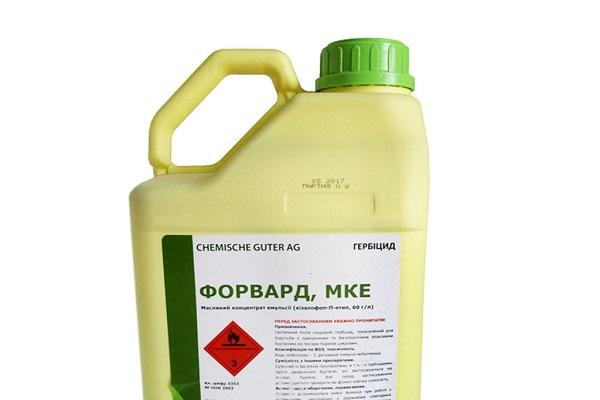
Consumption rate of funds
One-time treatment with the Forward herbicide is carried out in accordance with the regulations, which recommends the following consumption rates:
- annual and perennial weeds on flax - from 1.2 to 2.0 liters per hectare;
- weeds of the annual cycle on soybeans, beets and sunflowers - from 0.9 to 1.2 liters per hectare;
- perennial weeds on the same crops - from 1.2 to 2.0 liters per hectare.
Annual weeds are cultivated during the period when 2-4 leaves have developed on them, perennial - when they reach a height of 15 cm.
Preparation and use of working solution
According to the instructions, the working solution for spraying is prepared immediately before use. To this end, perform actions in the following order:
- The drug is thoroughly mixed in its original packaging (canister).
- Measure the required amount of the substance for filling the sprayer.
- Fill the tank halfway with water.
- A metered herbicide is poured into it.
- Mix thoroughly.
- Add water to full volume.
- Spraying is carried out in compliance with safety measures.

Safety when working with the tool
During the processing of the site, it is necessary to observe safety precautions:
- do not allow children, pregnant women, patients with contraindications to work with herbicides;
- use personal protective equipment (clothes, boots, gloves, glasses, respirator);
- do not enter living quarters in protective clothing after processing the site;
- do not eat, drink or smoke until the end of the work;
- do not leave the chemical in public places unattended;
- do not remove protective clothing until the end of work;
- at the end, wash your hands and face with soap;
- if the drug gets on the skin or eyes, rinse them well under running water;
- if the chemical gets inside, you should drink activated charcoal, induce vomiting and consult a doctor.
Drug toxicity
The Forward herbicide belongs to the third class of danger to bees and humans. It is necessary to observe a number of precautions when working with the drug:
- do not spray if the wind speed exceeds 5 m / s;
- do not carry out processing if the distance to the apiary is less than 3 km, to the settlement - closer than 0.3 km;
- before carrying out work, it is necessary to notify the owners of the apiaries and limit the years of bees to 3-4 hours;
- you cannot use aircraft for spraying;
- it is prohibited to use the Forward herbicide in personal subsidiary plots;
- should not be sprayed in the water protection zone and near sources of drinking water.

Compatibility with other substances
The herbicide "Forward" can be used in tank mixtures with other preparations - "Betaren", "Lornet". Experts recommend a preliminary check for component compatibility. For this, substances are mixed in a separate bowl and their reaction is monitored. In case of precipitation or flakes, the mixture cannot be used.
How and how much can you store
If the original packaging is intact, the drug can be stored for up to 3 years. The optimum temperature ranges from -15 ⁰С to +35 ⁰С.
After using sprayers, they must be treated with an alkaline solution and rinsed with warm water, and the paper packaging must be disposed of.
Herbicides are stored in a special warehouse, separately from fertilizers, by closing the container tightly and attaching a label.
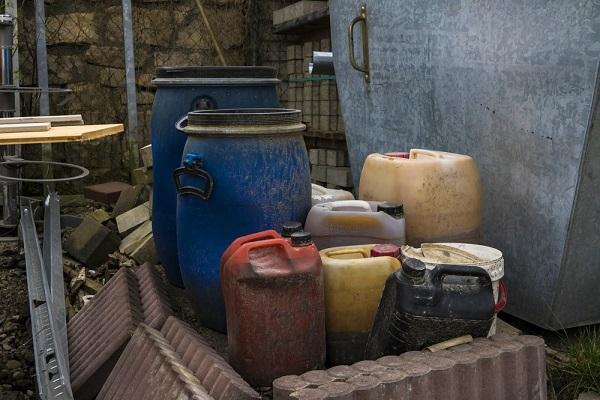
Are there any analogues?
Herbicides with properties similar to Forward include preparations:
- Alpha Tiger;
- "Leopard";
- Miura;
- Norvel;
- "Excellent student";
- Rangoli Targon S;
- Targa Super;
- "Target Hyper";
- "Hunter".
All of them are in the form of an oil emulsion, have high efficiency, selectivity and safety for crops.

